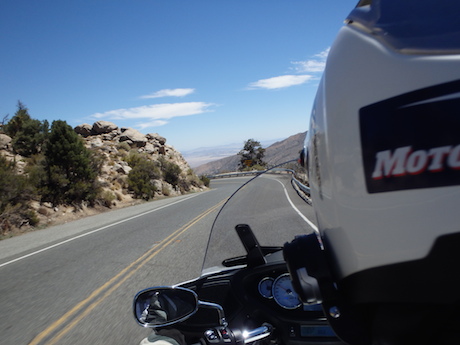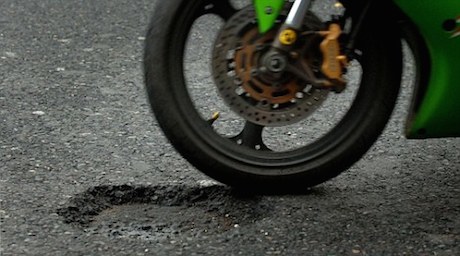Have you ever heard of target fixation? It’s where your eyes focus on an obstacle and you end up riding your motorcycle straight into it.
My wife had a big case of target fixation on her learner course: she saw the fence, thought she would hit it, didn’t take her eyes off it and … she hit it!
Riding experts talk a lot about how to avoid target fixation, but it is really difficult to stop fixating on a target or ignore impending danger.
For example, the rider in the video below seems to have made a bad corner entry choice and runs wide, looking at where he is going to end up and … going over the edge of a cliff!
Luckily he survived.
Good instead of evil
However, target fixation is not necessarily a negative thing. You can use it for good instead of evil, like steering your bike toward a corner exit, or around an obstacle.
Have you ever gone into a corner too hot? Yeah, all the time, right? What happens next is you tend to look at where you think your bike is going to go and that becomes a self-fulfilling prophecy.
But what if you shift your gaze toward a more appropriate target? Say, for example, the exit of the corner. Chances are your body will shift stance slightly and you will counter-steer toward the proper exit.
Similarly, if you see a pothole or a rock on the road and you stare at it, you will hit it. But if you see the harmful obstacle and then re-focus your eyes to a harmless sport nearby, you will steer there and avoid the danger.
 Pick your target
Pick your target
It’s all about picking another target. One that is not going to end in tears. I’ve done it on several occasions to avoid danger, but it takes a bit of practice.
So how do you practise refocusing on harmless targets? It’s easy.
Pick a spot on a quiet stretch of road and then find something like a mark on the road to act as your “obstacle”. Then find something nearby to refocus on.
Ride by and focus on hitting the first target. It won’t be difficult to hit it. Then ride by and focus on the first target, but refocus on the new target and see if your bike follows your gaze.
Blind corners
Target fixation crashes often happen on blind corners. An unusual object on the side of the road or a vehicle coming in the opposite direction suddenly grabs our attention.
The problem is that when we are surprised by something we may hit, the natural reaction is to turn the handlebars away from danger. That actually stands the bike upright and steers you toward the object.
You have to teach yourself that counter-steering is your natural reaction to a surprise.
To do that, ride into every blind corner expecting to be surprised then you will be prepared for it.
Your plan should be that if your attention is suddenly diverted by any object, you are ready to counter-steer toward the object which will actually steer you away from it.



 Pick your target
Pick your target